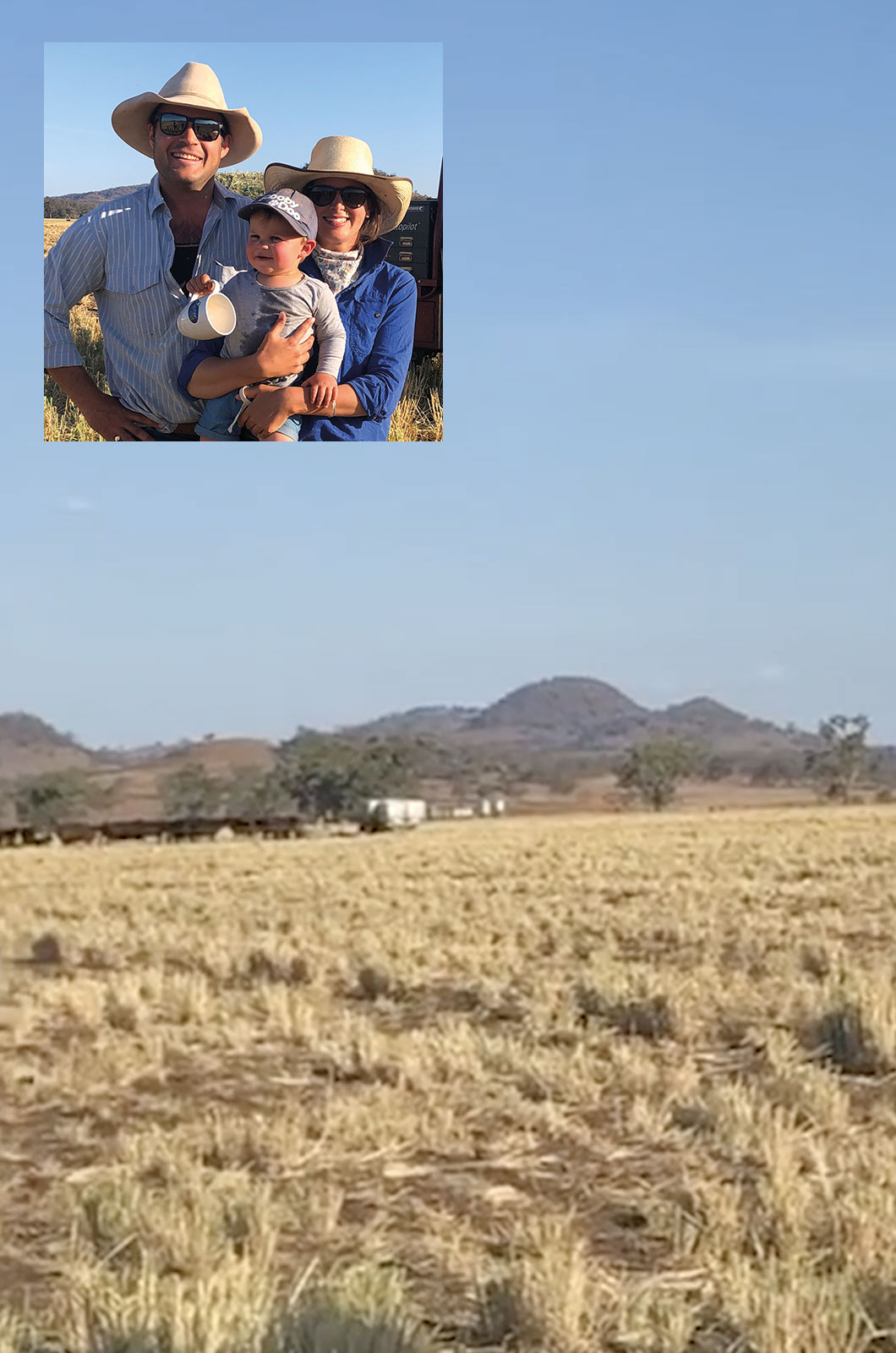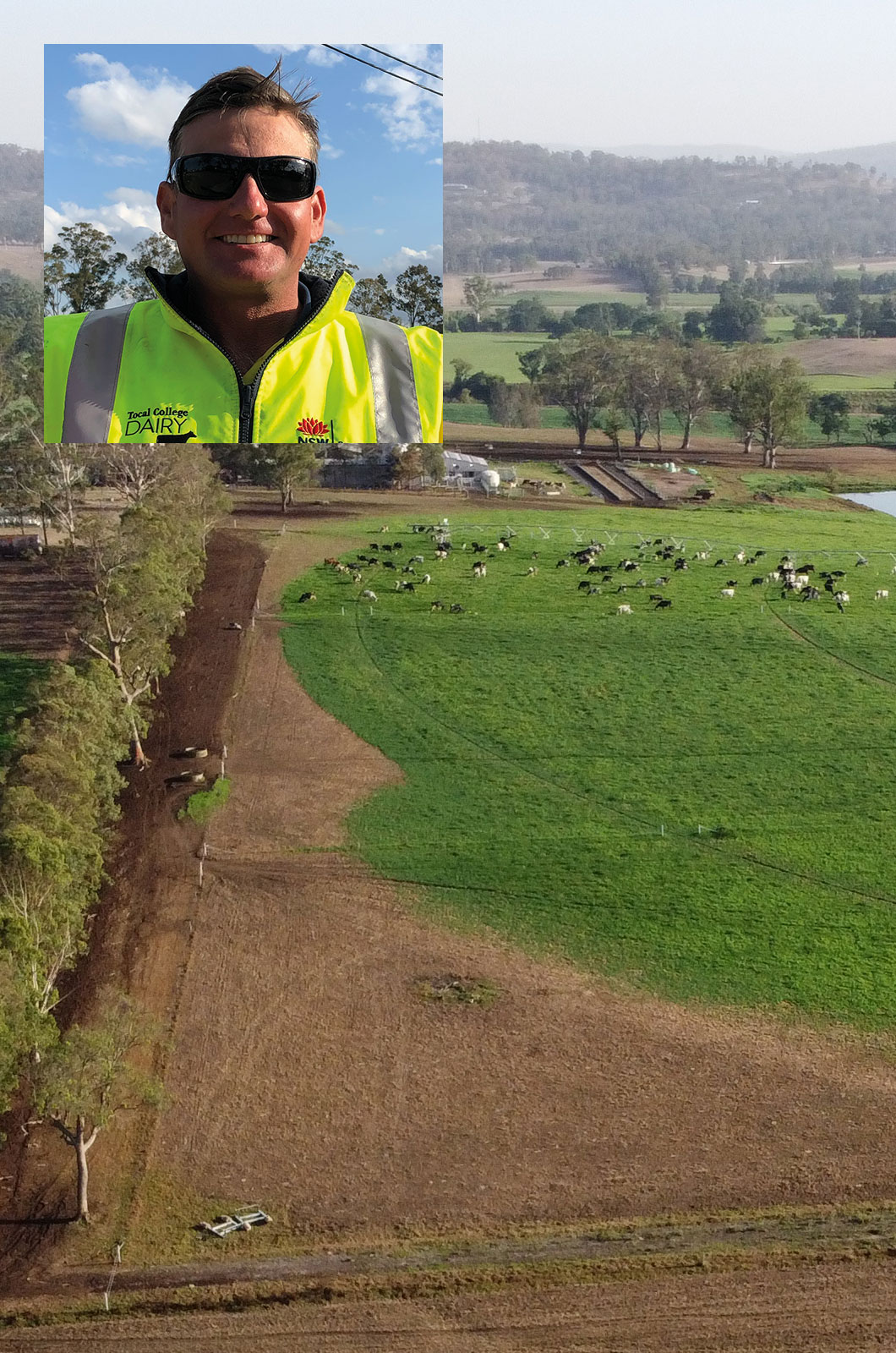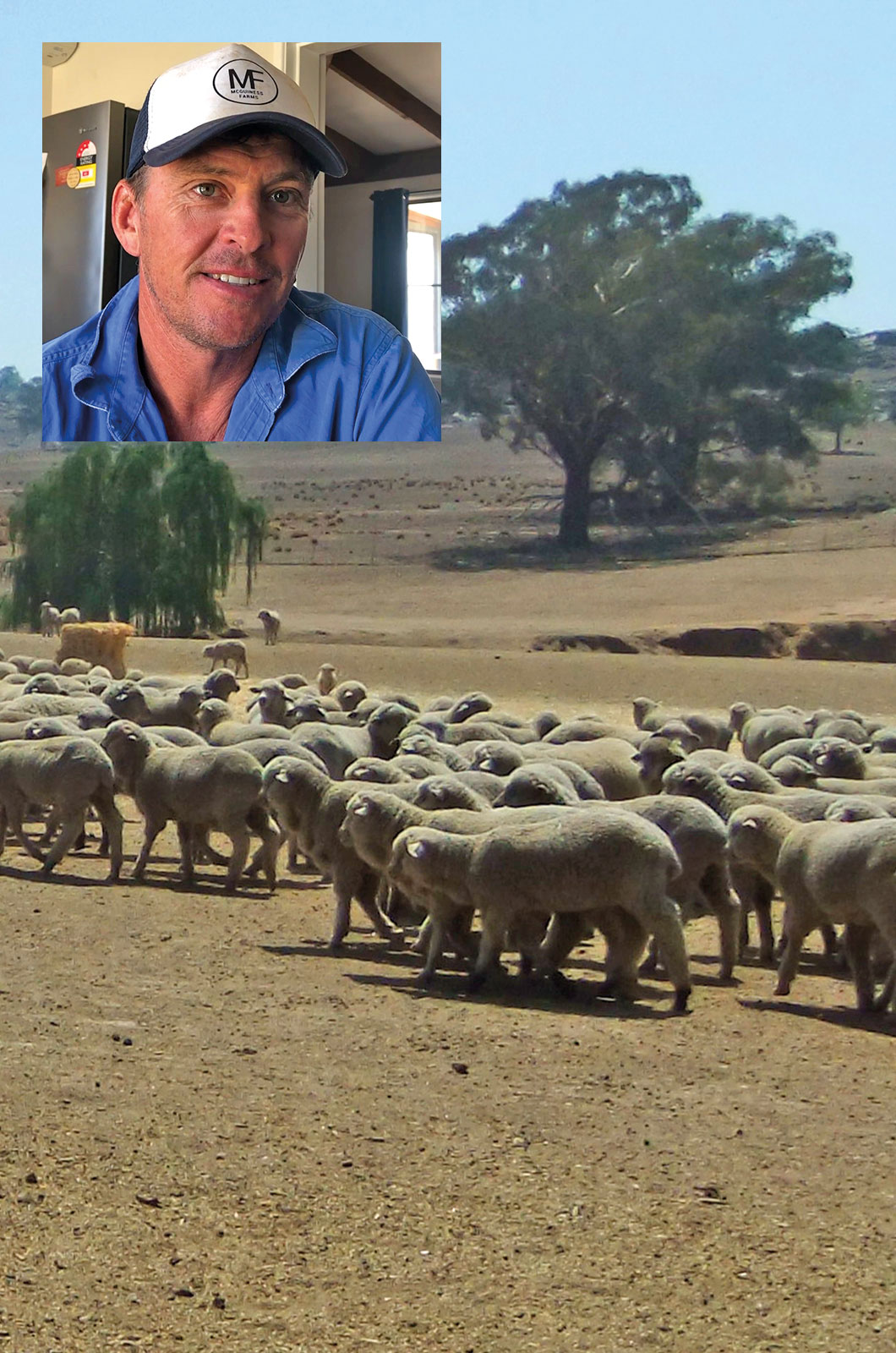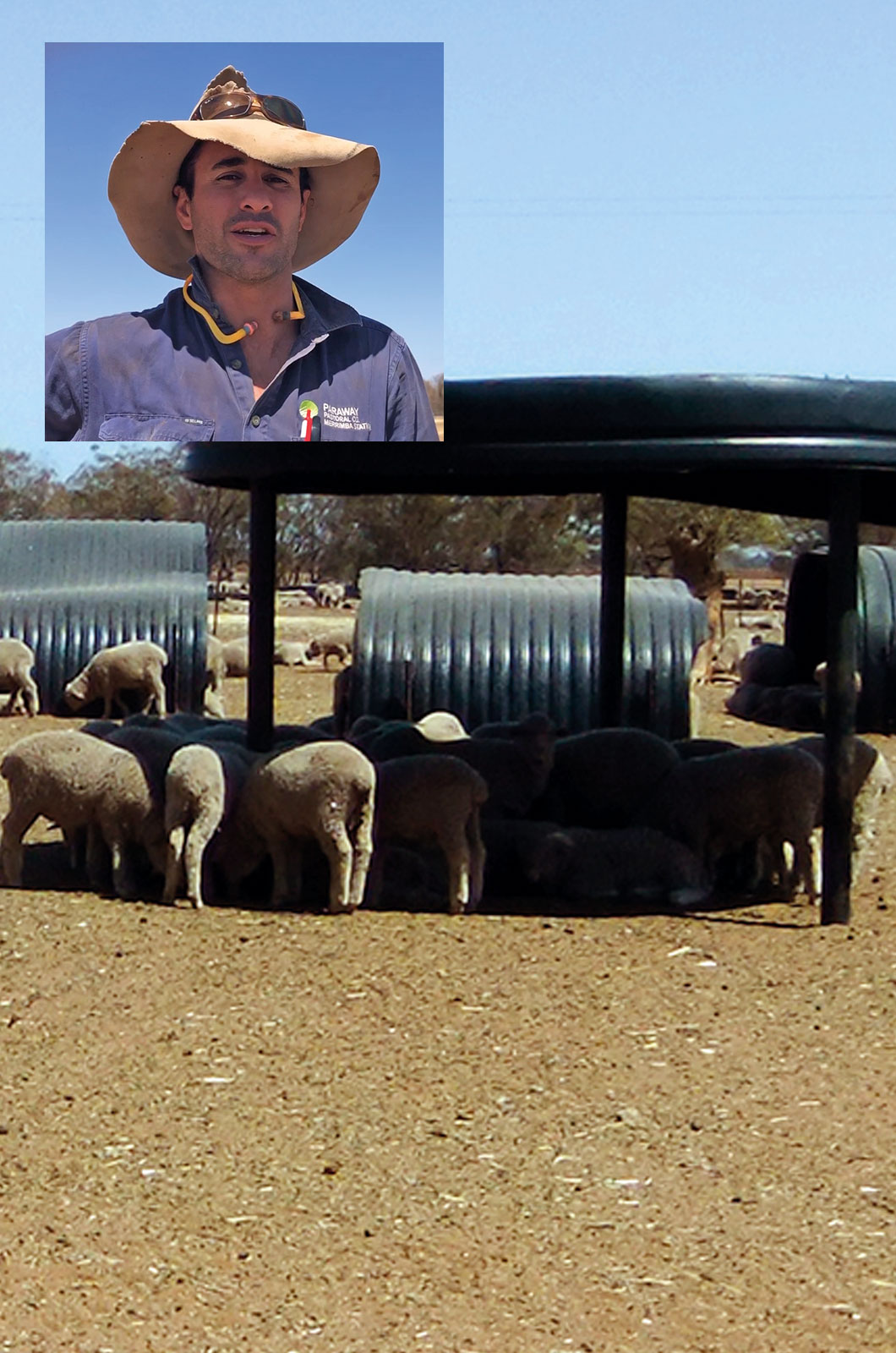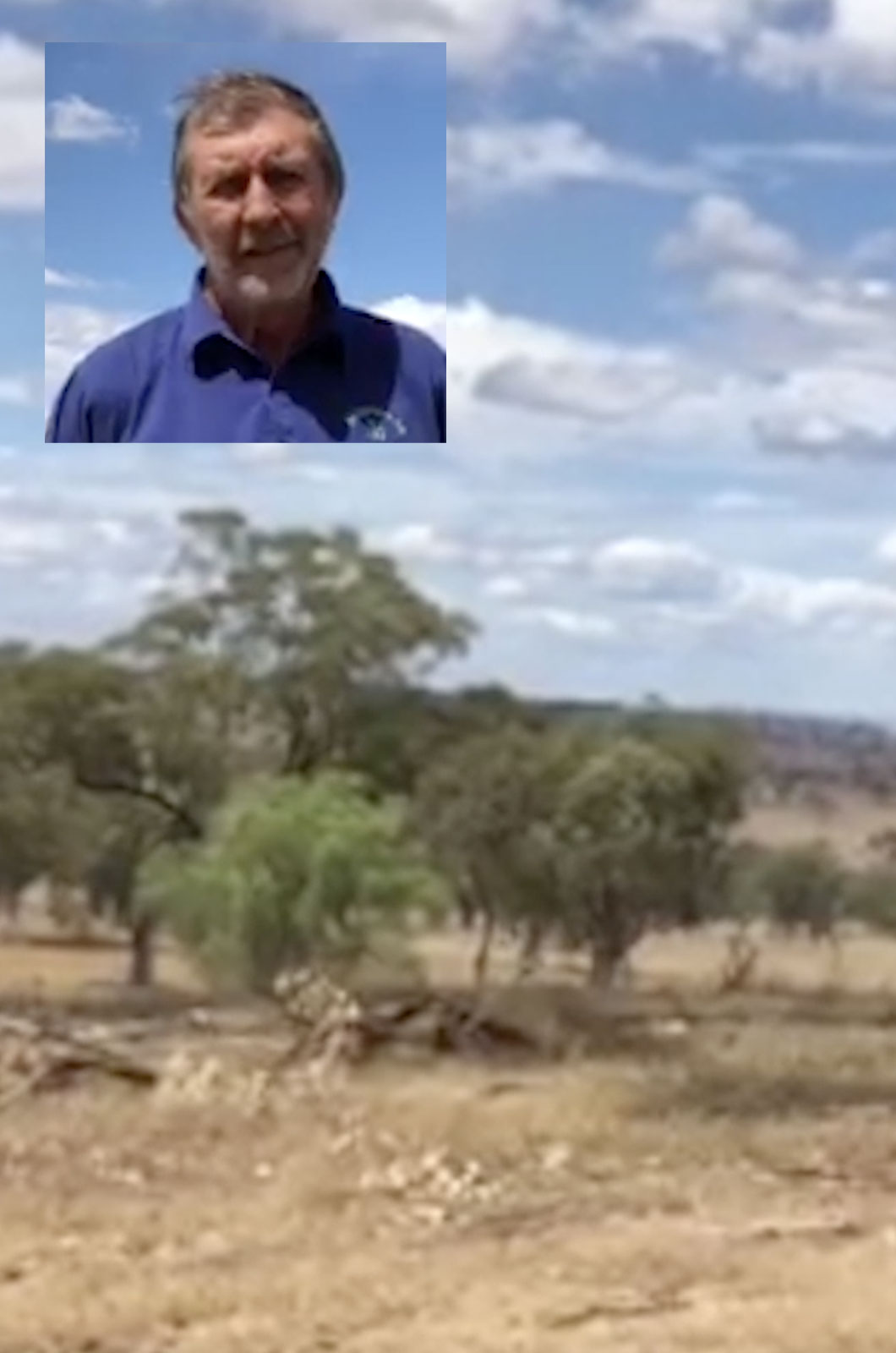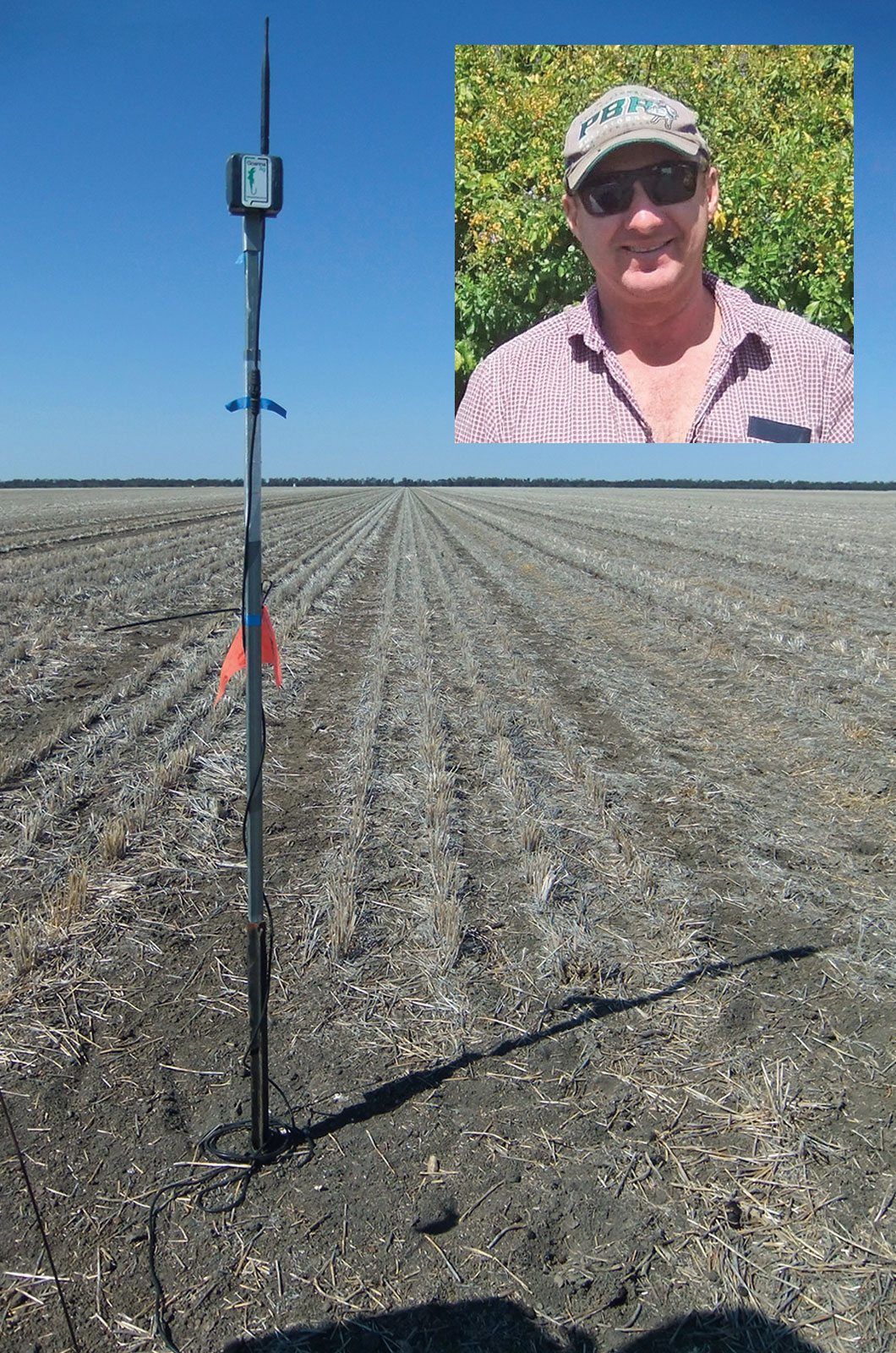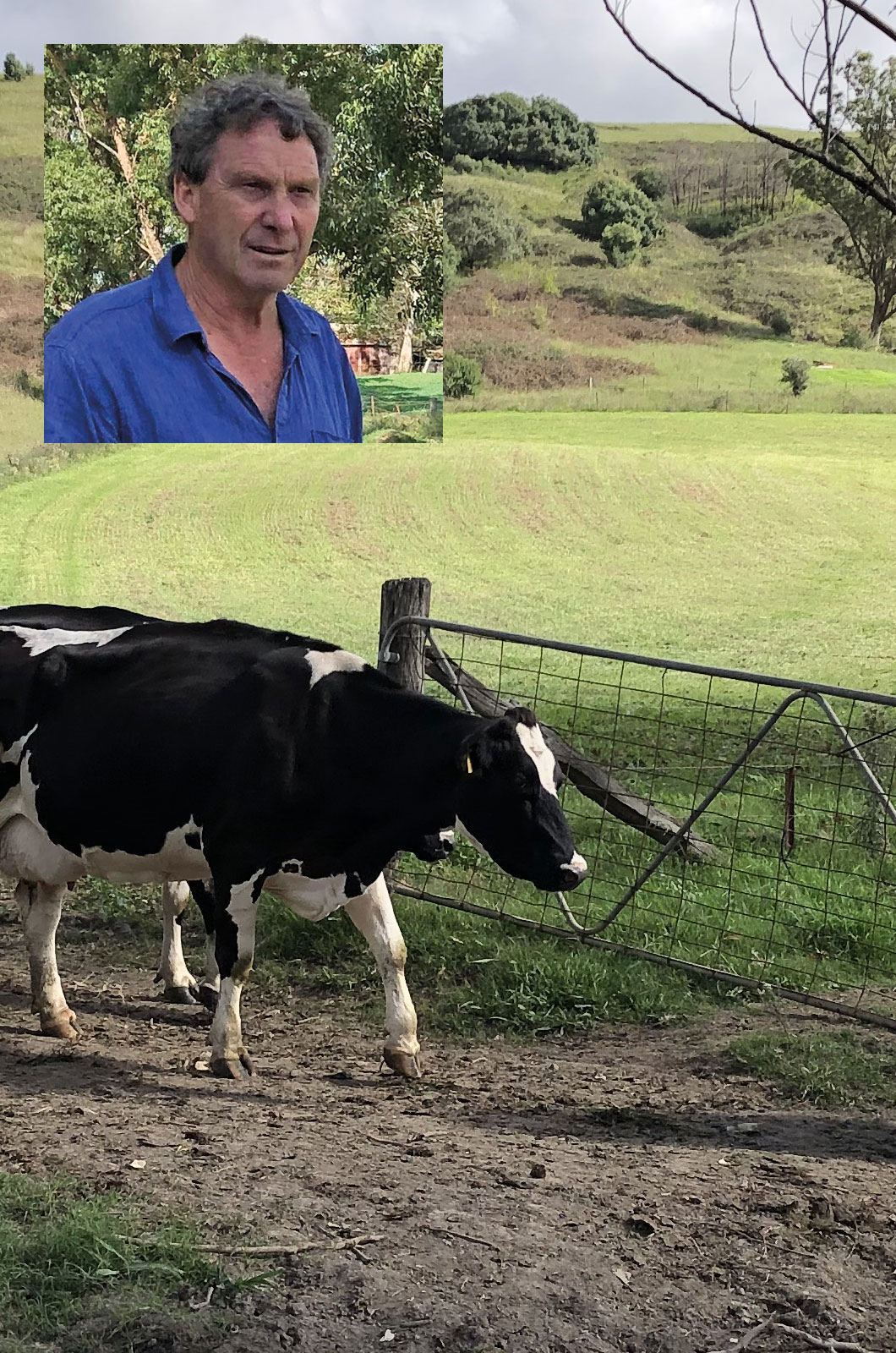 Location: Frogmore, NSW
Location: Frogmore, NSW
Owners: Tom and Georgie McGuiness
Tom and Georgie McGuiness own and operate McGuiness Farms, two similar self-replacing commercial Merino enterprises on two different properties: Clonalton at Frogmore and a second property, Bigga Station at Bigga. Each property employs two full-time workers with contractors brought in for seasonal work such as shearing, crutching and lamb marking. They usually shear over 30,000 sheep in total–in November at Frogmore and in March at Bigga. Tom manages both enterprises.
At Clonalton, in Frogmore, water is available from an elevated spring. It can be gravity fed from the spring to a tank and then reticulated to troughs through the property. Spring-fed dams that were well-positioned in the past are also available for the stock. In very dry times some of these dams are dry but there is overall enough water for the stock on hand. Tom says that water is critical and it must be clean and fresh. He prefers concrete troughs rather than metal because they don’t get damaged and then waste time, water and labour.
All ewes have electronic identifiers to assist management. For example, at first shearing, fleece weight is individually recorded along with body weight and visual traits from classing so that the ewes can be indexed. This information can then be used in the breeding program where the best ewes can be mated with the best rams and the least performing ewes mated to a terminal sire for eventual culling. Tom says you need to measure to manage. If you measure performance and keep good records you can be aware of what works well and what you need to change.
Fertility of the granite soils is tested in every paddock every year. There is sometimes a need for lime when sowing new pastures. Phosphorus is a key component and top dressed to maintain it at a critical level for pasture growth. Nitrogen and trace elements are also spread according to need.
Tom manages with dry times in mind. He says this granite country doesn’t do dry very well because it requires plenty of rain at the right time. Of course, this rain is not always reliable and Tom is used to having dry seasons and plans for them. The sheep graze on native pastures but there are also introduced species remnant from earlier times when improved pastures were planted. Winter is the time of very slow grass growth and Tom plans for this by sowing forage crops such as oats or grazing wheat for the winter feed deficit. He also buys-in grain for the winter. The stock are gradually introduced to the grain over a period of several weeks to avoid problems of acidosis. Ideally, he would not feed grain every year and he endeavours to match the stocking rate to the pasture growth curve. Added to this calculation is the changing nutritional requirements of the ewes as they change from being dry to lactating. When stock are grain fed, they are also given access to straw for roughage and lime, salt and a buffer concentrate pellet.
The enterprises are managed according to feed available: lambing in spring when pasture growth is best. Surplus stock are sold at the end of spring before going into the drier period of summer.
The stocking rate is adjusted to achieve an optimum wool production measured in kg per ha. This is a high stocking rate with animals kept in a condition that maximises the wool production and maintains animal health. Tom closely matches the megajoules (MJ) of energy fed to sheep and the nutritional requirements of the animals. He says the NSW Department of Primary Industries provides very good information and guidelines to help producers assess both the feed quality and the requirements of the animals. These guidelines allow for economic feeding: no wastage of feed and no undernourished stock.
The grain is bought according to the cost per MJ. It is usually barley or wheat bought at harvest time and in sufficient quantity to fill the 500 tonnes storage capacity on the farm.
When there is the need to feed grain, the sheep are enclosed in sacrifice paddocks or drought lots. These areas are as small as practicable. To deliver the feed, Tom uses carts with scales. He has calculated the exact weight of feed that will provide the MJ of energy to the specific number of sheep in the paddock. The scales, with a monitor fitted into the cab of the truck, indicate when that weight has been dropped. Tom continually monitors the condition of the stock and changes the ration, if required. Grain is fed-out preferably three times per week but sometimes spread over two days, depending on the mob size and nutritional requirements.
Tom believes that being well prepared for dry times is important for mental health and for avoiding depression. He also believes that it is important to surround yourself with people who think positively and avoid the doomsday prophets. He says if you have a plan and when dry times come you follow the plan and busy yourself with the implementation, you remove any anxiety, especially anxiety associated with finance because you have already given it full consideration and made your decisions.
Advice for preparing for dry times:
- have a plan in place. Don’t wait to be in the middle of a dry season to make plans: know what you will do when the dry begins. For example, if you plan to sell and not to feed, be ready and be aware of your trigger points
- if you plan to feed, know the nutritional requirements of your animals and make plans to have sufficient feed for your stock numbers. It is important to know the MJ of energy required and have it available
- don’t be afraid to feed BUT if you plan to feed, understand the economics involved: know the gross margins, the length of time you will feed and what the end result will be
- if you feed, start feeding early before pastures are degraded and while the animals are in good condition. Continue feeding after the break to allow pastures to recover
- if you feed and it’s possible, get someone else to do the feeding (at least once a week). It takes the emotion out of it and allows you to do other things
- don’t abandon your plan and don’t spend money unnecessarily. Be wary of trends and any sales push from commercial bodies.
Tocal newsletter
Want to find out about news, events, courses and publications?


